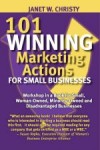With the economic environment showing little sign of improvement, businesses really need to look for any possible way to streamline their expenses. So this week, I decided to reach out to my network of trusted experts and entrepreneurs to find out how they think businesses can cut unnecessary expenses to improve profits. Their answers are presented below in no particular order.
You may notice some similar ideas, but I kept the insights separate, as something in the way one is framed may resonate differently with you.

1. Toll Free Numbers?
I think 800 numbers are obsolete and a waste of money today. There was a time when they were a necessity, but telephone plans now include long distance, so there is no need to have them.
Does this impact sales? Not anymore.
Does this save you money each month? Absolutely.

2. Fools Rush In
I made a mistake a few years ago that cost me dearly...I had big dreams of what I could do with a potential client and after several talks with them and what I believed was closing in on sealing the deal - I went and purchased the equipment I knew I would need to fulfill the contract. Well...guess what...the contract fell through because the company ended up in a union dispute and ultimately, the workers went on strike - voila - the deal was kaput. Live and learn! Seal the deal first!

3. Networking or Not Working?
Spending time and money on networking with people who are not customers, clients or prospects may feel productive and offer the promise of referrals. However, the return on investment is normally minuscule. This applies to in-person and social media.

4. Outsource
When I assumed control of this small but talented marketing company, we had strategists, creative people and admins. As times required leaner operations, I began laying off admin personnel and outsourcing the functions. And it worked. In fact, it worked better than having my own employees. The bottom line is that our firm's sales are based on our talented strategists and creative minds, not our ability to manage a/r.
Thanks to: Robert Rippee of
FORMO.

5. Things of the Past!
Technology has made life and daily office functions compatible and economical to the New Age entrepreneur. Email, efax, IPads, Kindle readers, smart phones and all the latest age instruments we use make printers (with expensive cartridges), copy machines, telephone systems, realms of paper and excessive man hours obsolete. We can do all of our office functions now from the palm of our hands!

6. Ditch Your Real Estate
You should think about whether you REALLY need a physical location. Unless you need space for customer visits or most of your sales are from walk-in customers, there is a good chance you can either downsize your building or get rid of it altogether. Can you squeeze into a smaller footprint and sublet your extra space? Sure, it feels good to have a building with your name on the door, but does it really generate profits??

7. Getting Your Name Out There
Getting your name out there is a complete waste of money for small business owners. You may as well put a sandwich board on and walk down Main Street ringing a bell, or call everybody in your town and say your name. McDonald's and Microsoft can afford announcement advertising. Small business owners have to master guerilla marketing and use direct response ads ONLY. Give the reader of your ad a headline that sums up your business, a reason to care, a call to action and a REASON to visit your website.

8. Do It Yourself
As a sole practitioner, I used to outsource some routine tasks, like producing and distributing my eZine.
I have found that I can do this myself, and by working an extra hour or two on the weekend, I can save about $600 a month.
So, I have been working weekends more and outsourcing less.

9. Big Money Waster
The biggest money waster I can think of is the wasting of time. It's the one thing you'll never get back. If you used your time more effectively, you'd have more of it left over to do the things you should be doing like pleasing and acknowledging customers, trying various marketing strategies and listening to what your employees suggest. People who utilize their time effectively get almost 5 times the amount done than others who do not. Learning that skill will set you apart.

10. Buildings Begone!
One of the biggest expenses in business is real estate...trying to have your whole operation and all employees under one roof. I don't know about it being the Age of Aquarius, but it is the age of outsourcing, telecommuting, and the internet. It's amazing how much your peeps can do from remote locations around the world. Today, so much communicating is electronic via phone and internet, so why not take advantage of it. Keep your overhead very low and you'll survive any economic climate.

11. Failing to Plan Can Cost You
Here is a real easy way to save money in the long run. Plan & implement your marketing strategy 6 months to a year out. Take into consideration ALL the events you are going to exhibit at, ALL the materials you are going to need to print and ALL the promotional marketing pieces you will need and implement through one source at one time. By looking at your overall marketing picture in advance, you save money on design, printing and shipping, which goes right to the bottom line.

12. The Insecurity Costs
The biggest money wasters are all those costs that relate to endlessly checking, double checking, redoing someone else's work, and micromanaging. I call these "insecurity costs".

13. Save Your Advertising Dollars
Many small business owners believe getting an ad once or twice in a local newspaper will grow their business. Save your dollars. If you want to be in the paper, host an event and then, send a press release. Not only will the article give you instant credibility, but speaking in front of a room will bring in new clients. Learn to build a relationship from the front of a room and you will get results.

14. Review Your Phone Plans
Many small business owners can get rid of their land line and use their cell phone for business and long distance calls. This can save between $30 to $40 a month. That doesn't seem like a lot, but that is $480 a year. Also, take some time to analyze your cell phone plan and make sure you are in a plan that suits your needs. If you are going over in minutes or texts, then you need to increase your plan to avoid overage charges.

15. Saving Paper Generates Ideas!
Collect all the scrap letter-size paper around the office that is blank on one side, including scrounging the trash cans, waste baskets and desks... and put it in a stack.
Cut that stack in half and then in half again which will give you 4 small note-size sheets from each page. Stack them together, flip... viola! Instant note paper! Do away with post-it's, legal pads & keep clutter to a minimum!
For a busy office, this will make a difference in 2 weeks... clutter is re-purposed for profit!

16. Money Leaks
Money leaks out of companies because people aren't focused on what they do to contribute to the bottom line. Show each job holder how the work connects to financial results.

17. Throw Out the Server Rack
SMBs can consolidate IT hardware & software costs into one hardware device that is built upon an open source platform with zero software license fees and zero per-user license fees. ClearOS is a great solution.
With a solution like ClearOS and ClearBOX, SMBs can save thousands or tens of thousands of dollars upfront and much more in recurring software updates and service
fees.

18. STOP Chasing Customers & Sales
Spending money attracting more leads & closing more sales may be the WORST thing you could do for your business. Save your marketing budget & spend some time measuring/improving your profitability first. Profitable growth should be the goal of every business. However, you can only achieve profitable growth after establishing that you are in fact profitable. Break-even analysis is one of the most simple & powerful calculations that you can use each month to measure & enhance your profitability.

19. Know Why They Buy
I was named on six patents, five of which will NEVER see production. Not one customer could be found that expressed a need that those five products could have solved. The one that made millions for the company was a simple solution to a well defined customer centered problem. If you want to reduce waste, use a system that defines the customers' problem in detail. I suggest you may think of it this way "If the customer is not writing checks for it, don't do it." Do nothing more, nothing less.

20. Every $ That Doesn't Bring $$
In a start-up business, every dollar that you spend should have a reason & ROI associated to it. Leasing a big office, hiring an employee, getting a fancy website, trade shows, billboards, flying business class because your title is President/ CEO now etc., is all waste of money unless you have a reason & ROI associated to it. The rule of thumb is every dollar spent should add to the sales/ revenue, if not, it's a waste of money. Don't waste money, send it to me or Carol instead!

21. Goodbye to Brick and Mortar
The overhead associated with having commercial space can be reduced through utilization of technology. Hence, many retail locations have become "petting zoos" for those who, in the end, shop online. Costs associated with utilities, office furniture, and myriad expenditures can be reduced by virtual applications and renting meeting space as required or reducing the overall perceived requirement for commercial space.

22. Scratch the Yellow Pages
Forget the traditional print yellow pages; it's a big waste of money. First, there can be up to a half-a-dozen different versions in many communities and picking which one is problematic. Second, if you sign-up, you're locked in for a year, even if you get no results. Finally, think about how YOU look up information about a business, like a phone number or its hours --- you Google them for their website, that's how. When's the last time you actually picked-up a traditional yellow pages book?

23. Turnover is a Big Cost
According to the U.S. Bureau of Labor Statistics, almost 2 million people quit their jobs every month. A Gallup poll revealed that the majority of workers quit because of something leadership could control. Depending on the situation, it can cost 50% - 150% of annual salary to replace a worker. So, when managers are ineffective leaders, it's costing big money. How much more product or service must you sell to replace that worker who quit because of bad leadership?

24. Spend Less to Get More
Keep shifting your marketing investment away from high-cost traditional advertising towards referrals, e-newsletters, blogs, social marketing, speaking, article writing, and other low-cost or free tactics that establish your credibility and demonstrate value. That way, you get more clients for less money. For instance, many businesses leave money on the table by not focusing enough on increasing customer loyalty and getting more referrals from current customers -- all of which is FREE.

25. Catch All Tip
The best way to cut unnecessary expenses is to look at your Income Statement for the last 4 years & compare the changes by line item to see where expenses have changed as a % of sales. This will tell you where the money wasters are. If you have performed at that level before, chances are you can again, with the right focus. Set this best performance benchmark as an objective for improvement, identify the steps for change & implement.

26. Hire Great People
One wouldn't necessarily think adding to the payroll would save money. However, I have found the regions where my best people reside don't require as much of my personal attention. This means our travel budget has been reduced significantly. So, sometimes it might pay to spend a little more on your people, which in turn helps curb other expenses like travel.
Thanks to: Scott Lerner of
solixir.

27. Fire Your Customers!
"Fire" your least profitable customer(s); they are the biggest money wasters! As a Radio Station manager, I had a customer that beat me out of every nickel, and had me jumping through hoops to keep his business.
Other customers had ten times his budget, and conducted themselves more professionally.
I finally recommended a station across town that "would serve his needs better". My productivity went up, and (presumably) my competitor ended up with Human Flypaper on HIS shoe.

28. Inventory Can Be Costly
A big waste of money is excess inventory. Plan in advance as to what is needed and order as needed. The excess inventory ties up money that can be utilized in other more important areas of the business. Excess inventory is usually not stored in a convenient place, which causes the waste of motion, taking more time for the employees to do their jobs, as they need supplies that are not close by. It costs more, as employees are less productive in finishing more important tasks.

29. Biz Telecom, Drain on Revenue
Business telecommunications is a vast desert of "I don't knows" and "What is this service?" because of lack of knowledge and somewhat justified distrust of utilities. Businesses spend an excessive amount of revenue each year because of their lack knowledge about what their telecommunications infrastructure is comprised of, but there are solutions. Get an analysis! Examine those line rates! Upgrade! Telecommunications is the backbone of commerce and it should be a tool, not an income sucker!

30. Go Green & Pay Forward
Don’t waste money sending cards, token gifts, or hosting a costly event that many won't attend. Make a memorable difference virtually. Send an eCard to celebrate by giving to a worthy cause. An operations consulting client celebrating its 15th anniversary sent an email to its database announcing over 800 trees were planted through the Arbor Foundation based on the number of clients and associates served. The effort brought countless accolades to the firm and local publicity reaching thousands.

31. Utilizing Your Own Community
We find that utilizing our community networks helps cut advertising costs for us. We offer less expensive classes for the community through local Town Recreation Departments and Libraries who do their own advertisement, and then all we have to do is show up and do a great job. No overhead and no advertisement cost! The people then look for our services elsewhere.

32. Time 4 Profit
One of the largest expenses that most businesses have is payroll. The bottom line is that most business owners schedule too many employees and do not pay attention to the amount of payroll hours they are using. We have all see it when we walk into a place of business and there are several employees standing around not producing. This is an area of any business that is easy to control resulting in greater profit.
The quality of the employees you hire directly impacts profits and losses as well.

33. Measure Your Marketing
Measuring the results of all of your marketing efforts is a great way to reduce spending, while not having a negative impact on your business. Whether it is tracking the results of a flyer or determining the effectiveness of pay-per-click advertising, make sure there is a measurable component to every bit of marketing you do. You can look at the results and keep what is working and eliminate those things that do not provide a good return on investment.

34. Hiring Creative Types
This can be a big money waster in business. An American company once fired six designers in a row after many botched jobs, bad marketing, fights and arguments, and a big search firm bill. The problem was that the company was a technical company and kept hiring designers who were more about "self expression" than "user-centered design". Not all designers are trained the same way.

35. Brand it!
I hate when my clients waste money on co-op ads. Sure it may appear to extend their budget, but it usually does nothing to build their brand. Typically, it just helps the co-op sponsor, who holds all the creative cards. I would rather see my clients invest in their own unique marketing message!

36. Digitalize... Duh!
I am amazed at how many people/businesses have not embraced the digital age yet. Stop pressing print!
1 case of paper = $37, 1 Standard File Cabinet = $200 - $3,500 (fireproof), Capacity = 16,000 sheets of paper per cabinet = Approx $118 of paper. Approximate Toner costs per file cabinet = $279. Labor Costs in filing, retrieving and reprinting lost documents annually= $16,000 - $37,000 @ 3-6 minutes (averages) per file. Space annually $75 per file cabinet. You get the idea. Use technology!

37. Choke that Inventory Pipeline!
People tend to build up inventories to ease their schedules and work load- all kinds in different businesses: buffer stock, safety stock, information lead time, backup inventory, etc. These lead to greater inefficiency and wastage. Choke the inventory pipeline and see people adjust to lower buffers and become more responsive. Of course, they need to be enabled/empowered to adjust to this new environment- with tools and systems. But don't wait for it... demand lower inventories now!

38. Don't Buy the Cow
Businesses that believe that in order to source the strongest talent pool, they must create a full-time position are paying in advance for what they may not need, when they should be taking a pay-as-you-go approach. Often, a freelance professional can get the job done at a fraction of the cost, with the added benefit of enabling you to test drive the talent, gauge the workload, and drive accountability. Let the p'timer convince you that the ROI is worth the full-time salary.

39. Turn FREE Traffic into Profits
Wasting money from your budget on advertising? No worries! Drive free traffic back to your website and convert visitors into prospects & buyers. Use other people’s property (e.g. comment on other relevant blogs, be a guest blogger), submit articles to eZine directories (include a resource box with a backlink), utilize jv partnerships & affiliates to promote your products, use your social media network & connections, SEO (search engine optimize) your website and rely on word of mouth from loyal fans!

40. The Temp Agency Bonfire
Temp Agencies are used to augment needs in accounting and HR with temp/PT work. The problem- the “Temp Agency” is not a not-for-profit. They have overhead and a need for a thing called “EARNINGS” just like you. So when you use them, you get $10 per hour talent for $30. This is inefficient, ineffective and as smart as taking a $20 bill and lighting it on fire, every hour, for each temp in the building. Put out the bonfire; outsource your non-core processes with a fixed rate SLA.

41. What is Your Staff Costing?
In my experience, mis-hired, mis-managed and unmotivated staff can cost a business hundreds of thousands or even millions of dollars each year. Correct hiring and management procedures help a great deal. A generous incentive scheme and adequate ongoing training also makes a big difference. The Business Owner must understand how important this is or else lose - it is ultimately their responsibility to get this right!

42. Are You Making Google Rich?
Do you advertise online using Google Adwords? Did you set the account up yourself with one ad?
Do you measure your ROI and CPC on a daily basis?
You may be literally throwing money out the window!
Many companies are bleeding money in their Adwords campaigns because they don't understand the best practices of online advertising.
To get the most from your online advertising, either go to Google University online and learn about quality scores, or hire a professional.
Do you have another business money waster that wasn’t included? If so, please share it below. As always, many thanks to everyone who contributed to this article!










































